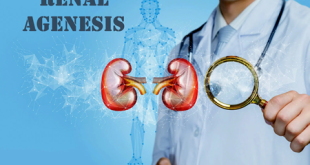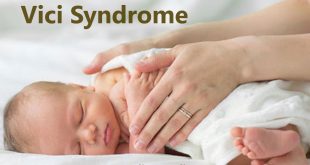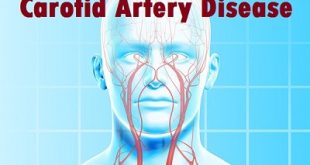Description
Carpenter syndrome is a condition characterized by the premature fusion of skull bones (craniosynostosis); finger and toe abnormalities; and other developmental problems. The features in affected people vary. Craniosynostosis can give the head a pointed appearance; cause asymmetry of the head and face; affect the development of the brain, and cause characteristic facial features.
Sometimes Carpenter syndrome is also referred to as:
- ACPS II
- Acrocephalopolysyndactyly type II
Carpenter Syndrome belongs to a group of genetic disorders known as Acrocephalopolysyndactyly, Type II (pronounced: AK-roh-SEF-ah-loh-PAH-lee-sin-DAK-tuh-lee) or ACPS disorders. All forms of ACPS are characterized by webbing or fusion (syndactyly) of certain fingers and/or toes (digits), more than the expected number of digits (polydactyly), and by the premature closure of the fibrous joints (cranial sutures) between certain bones of the skull, which is known as craniosynostosis and causes the top of the head to appear pointed or cone-shaped (acrocephaly).
Pathophysiology of Carpenter Syndrome
Carpenter syndrome is due to mutations in genes RAB23 and MEGF8. The RAB23 gene, located on the short arm of chromosome 6 (6p 11), encodes a protein involved in the process of movement of vesicles. This movement is important to transport molecules necessary for signaling during the development.
Through transport of certain proteins, the protein RAB23 regulates the hedgehog signaling pathway that is critical in proliferation and cell specialization and to the pattern of development in many parts of the organism during embryonic development. They have been linked over 12 RAB23 gene mutations with Carpenter Syndrome.
Although it is unclear how these mutations generate the characteristics of carpenter syndrome it is likely to change the transport of proteins involved in the hedgehog signaling pathway contributes to the development of this disease.
Causes and Risk factors
Carpenter syndrome is a genetic condition, caused by a mutation (change) on a specific gene. Research has identified the affected genes as the RAB23 gene or MEGF8 gene. Both these genes affect how certain cells in the body – including bone cells – grow, divide and die.
The gene mutation can be passed on from parent to child but in many cases develops sporadically (out of the blue). If it is inherited, it is passed on in an autosomal recessive manner – this means that a child only has to inherit the faulty gene from both parents to develop the condition.
Symptoms and Complications
It is characterized by the number of features which include:
- Craniofacial malformations
- Craniosynostoses
- Kleeblattschädel (cloverleaf skull)
- Obesity
- Congenital cardiac anomalies
- Umbilical herniation
- hypogenitalism
- Cryptorchidism
- Mental retardation
- Limb anomalies
- Genu valgum +/- lateral patella displacement
- Coxa valga
- Pes varus
- Syndactyly: typically soft tissue 3
- Polydactyly: typically preaxial 3
- Double ossification center of proximal phalanx of the thumb
- Broad first metatarsal
Diagnosis and Test
As children with Carpenter syndrome have a characteristic appearance, no specific diagnostic tests are needed. Imaging scans, such as x-ray, CT or MRI, may be suggested to monitor bone growth before, during and after treatment.
Treatment and Medications
The treatment of Carpenter syndrome is focused on the correction of the abnormal skull shape and mirrors the treatment of craniosynostosis. Although the timing of surgery can be highly individualized, surgical correction of the craniosynostosis associated with Carpenter syndrome is most often initiated between 6 and 12 months of age.
Surgery is usually performed through a scalp incision that lies concealed within the hair of the head. Your craniofacial surgeon will work in concert with a pediatric neurosurgeon in order to safely remove the bones of the skull. Then, the craniofacial surgeon reshapes and repositions those bones to give a more normal and enlarged skull shape which improves the appearance of the skull and gives more room for the brain to grow and develop.
Following surgery, your baby will spend at least one night in the pediatric intensive care unit prior to being transferred to a pediatric ward bed. You can anticipate that your baby will spend anywhere from 2-5 days in the hospital following craniosynostosis surgery.
In addition to surgical correction of the craniosynostosis, children with Carpenter syndrome may also require surgical correction of their cardiac defects. In some instances, these children may also benefit from surgery to remove extra fingers or toes or to separate digits that are joined together.
Children with Carpenter syndrome will also need close monitoring and special care of their psychosocial development, as they often face unique challenges at an early stage of life.
Prognosis of Carpenter Syndrome
Carpenter syndrome is not usually fatal if immediate treatment for the heart defects and/or skull malformations is available. In all but the most severe and inoperable cases of craniosynostosis, it is possible that the affected individual may attain a greatly improved physical appearance.
Depending on the damage to the nervous system, the rapidity of treatment, and the potential brain damage from excess pressure on the brain caused by skull malformation, certain affected individuals may display varying degrees of developmental delay. Some individuals will continue to have vision problems throughout life.
These problems will vary in severity depending on the initial extent of their individual skull malformations, but most of these problems can now be treated.
Prevention of Carpenter Syndrome
- Currently, Carpenter Syndrome may not be preventable, since it is a genetic disorder
- Genetic testing of the expecting parents (and related family members) and prenatal diagnosis (molecular testing of the fetus during pregnancy) may help in understanding the risks better during pregnancy
- If there is a family history of the condition, then genetic counseling will help assess risks, before planning for a child
 Diseases Treatments Dictionary This is complete solution to read all diseases treatments Which covers Prevention, Causes, Symptoms, Medical Terms, Drugs, Prescription, Natural Remedies with cures and Treatments. Most of the common diseases were listed in names, split with categories.
Diseases Treatments Dictionary This is complete solution to read all diseases treatments Which covers Prevention, Causes, Symptoms, Medical Terms, Drugs, Prescription, Natural Remedies with cures and Treatments. Most of the common diseases were listed in names, split with categories.








I like that you explain how craniosynostosis happens when the fibrous joints of certain bones of the skull close prematurely, causing a head to have a pointed or cone-shape. It’s also great that you mention how the timing of surgery with both of these conditions is highly individualized and often happens between 6 and 12 months of age. Since this is the case, it would probably be a good idea to find a doctor that specializes in these conditions as soon as possible to figure out the right time for the surgery and to ensure everything is prepared properly.